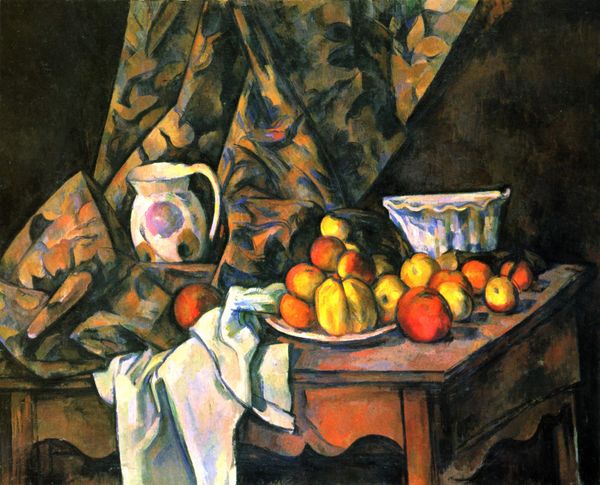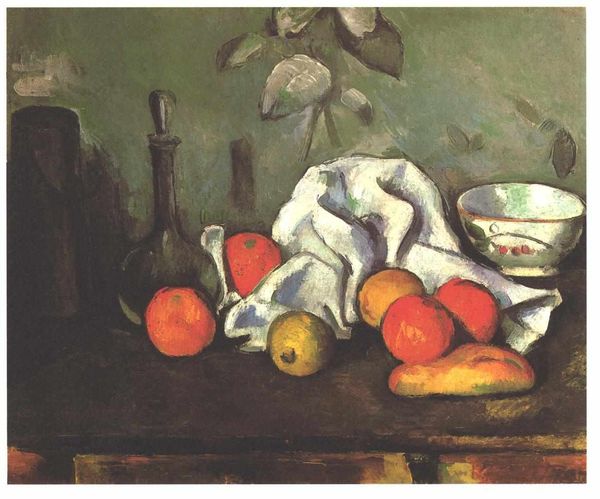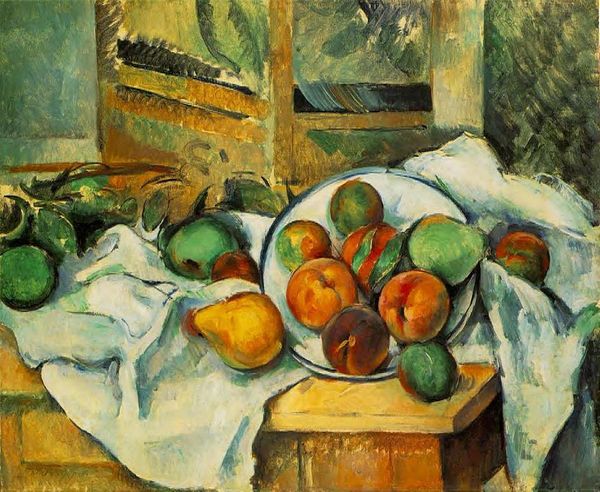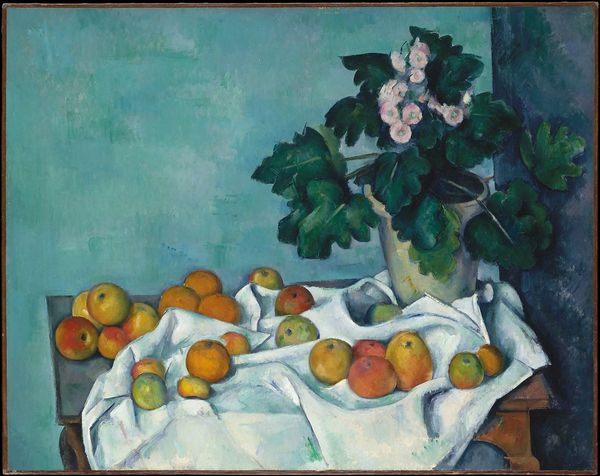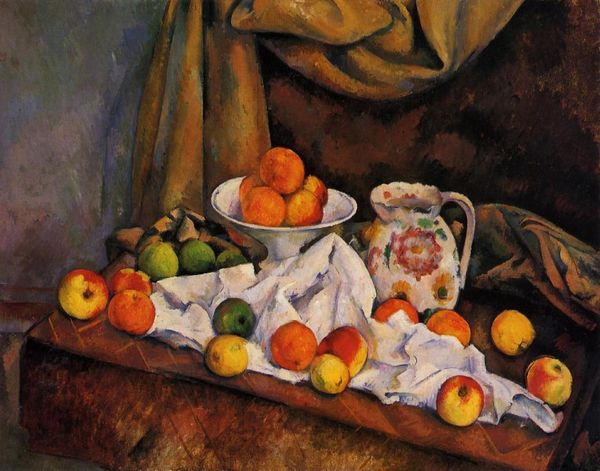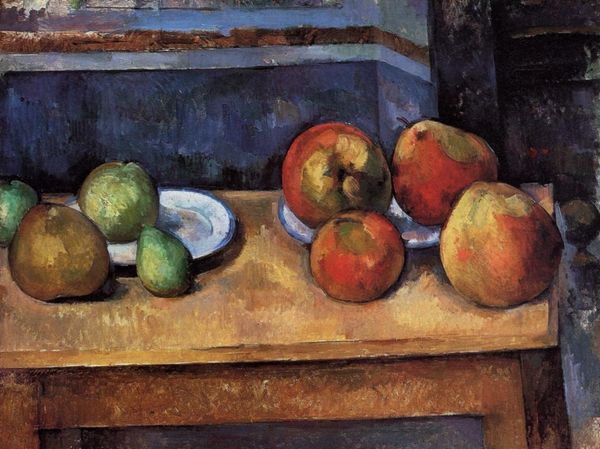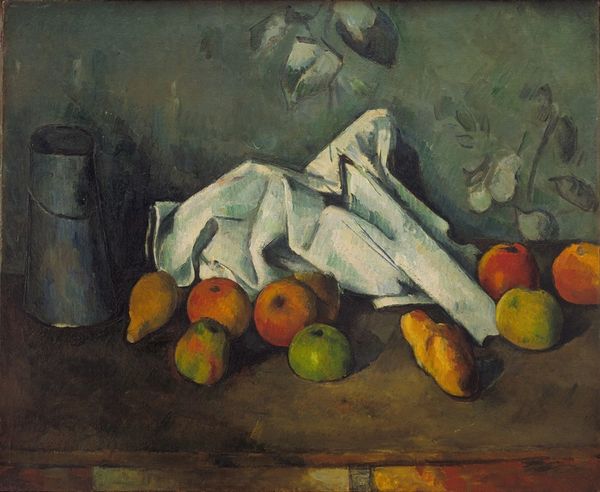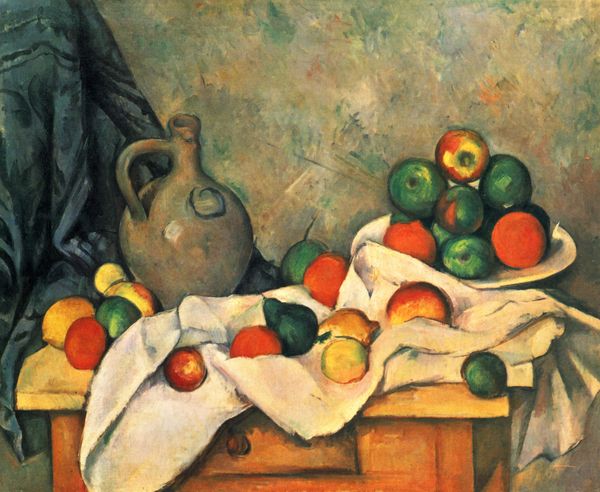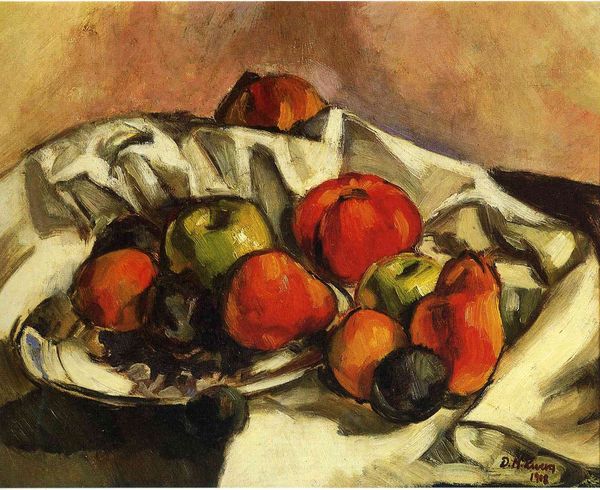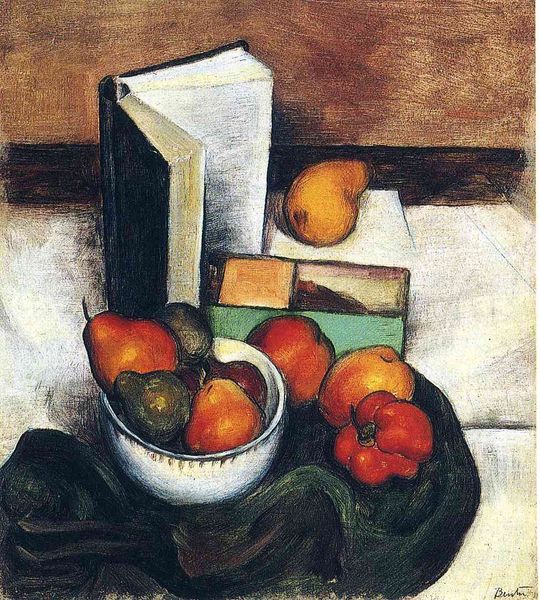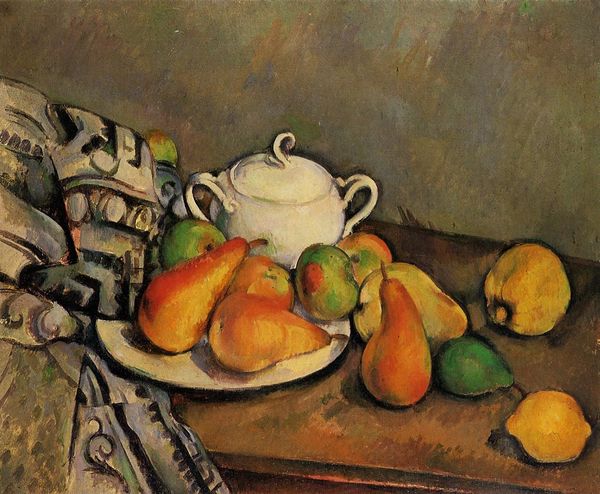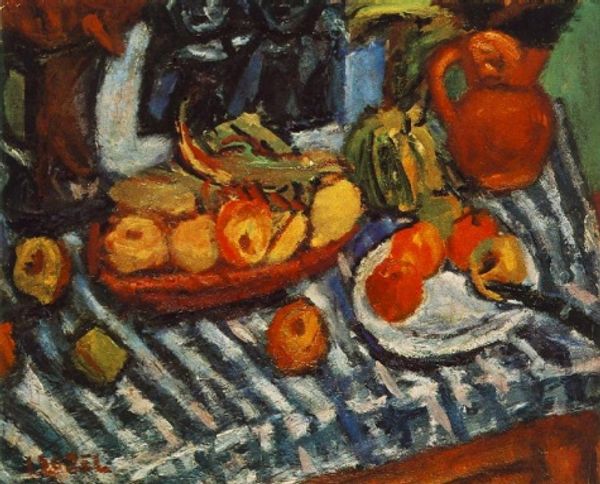
Dimensions: 65.4 x 54.3 cm
Copyright: Public domain
Editor: Paul Cézanne's "Still Life with Skull," created in 1898 using oil paint, definitely presents a traditional vanitas theme. I am really drawn to its slightly unsettling feeling. All of those delicious looking fruits juxtaposed against the human skull create a really stark image! What do you see in this piece? Curator: You're right, the juxtaposition is key here. Consider how the skull functions not merely as a memento mori, a reminder of death, but as a potent symbol steeped in cultural memory. Skulls appear throughout history, reminding viewers about mortality, and prompting introspection about existence. Cézanne isn’t just painting objects, but imbuing them with symbolic weight that has resonated through centuries. What do you think the fruits mean next to that skull? Editor: I guess they would be symbols of worldly pleasure. So like, "Here's the good stuff but don't forget this will all end?" Curator: Precisely! Think of the historical context – the rise of science challenging religious dogma. Did Cézanne arrange this carefully, you think? Could his personal worldview at the time impact how he chose to represent the composition? Editor: Okay, yes! Now that you say that, his angles make all these objects equal on the plane, and almost confront the viewer head-on. Curator: Indeed. Cézanne’s work is like visual poetry, using recognizable images to create a deeply personal meditation. So, death, decay, physical delight, memory: those coexist in the present moment, pressing us. What have you gained looking closely here? Editor: Now, seeing those visual symbols, I understand the universal truths around the human condition better, even in the modern context! Thank you.
Comments
No comments
Be the first to comment and join the conversation on the ultimate creative platform.
